Video
vimeo
Becoming from Aeon Video on Vimeo.
Watch a single cell become a complete organism in six pulsing minutes of timelapse. A film by Jan van IJken (janvanijken.com).
More on this video: aeon.co/videos/watch-a-single-cell-become-a-complete-organism-in-six-pulsing-minutes-of-timelapse
Watch more on Aeon: aeon.co/video
Subscribe: vimeo.com/aeonvideo
2 notes
·
View notes
Text
“TESLA SEES EVIDENCE RADIO AND LIGHT ARE SOUND.”
New York Times, April 8th, 1934.

An Inventor’s Seasoned Ideas
Nikola Tesla, Pointing to ‘Grievous Errors’ of the Past, Explains Radio as He Sees It at Age of 77 — He Expects Television
By Orrin E. Dunlap Jr.
A tall, lean inventor in a cut-away walked into his skyscraper parlor thirty-three floors above the sidewalks of New York, laid his black derby on the table, opened the window and then was ready to talk about radio’s past, present and future. He was Nikola Tesla, the inventor whose discovery of the rotary magnetic field made possible the alternating-current motor. He described a system of wireless transmission of energy in 1892.
Seven milestones beyond three-score and ten, this electrical wizard, who came to America in 1884, looked back across the years, recalled where theorists often chose wrong paths at the crossroads of science and then turned his thoughts to the future in which television lurks.
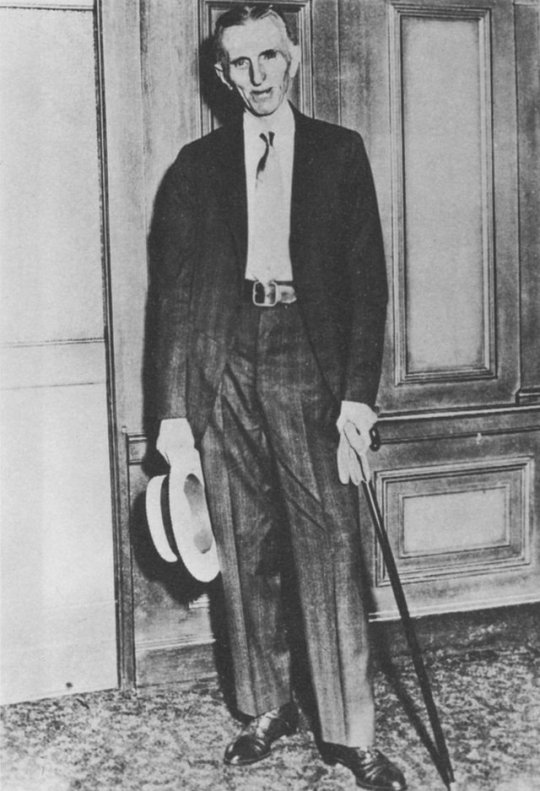
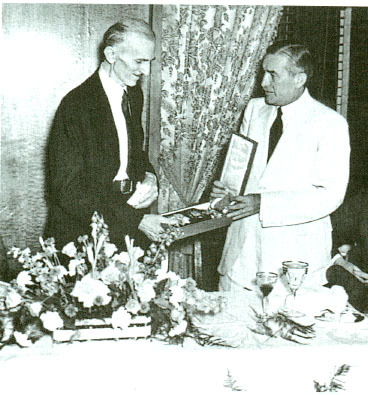
A Spectacle That Frightens.
“There is something frightening about the universe when we consider that only our senses of sound and sight make it beautiful,” said Mr. Tesla as his furrowed brow indicated he is puzzled with its destiny. “Just think, the universe is darker than the darkest ink; colder than the coldest ice and more silent than a silent tomb, with all the bodies rushing through it at terrific speeds. What an awe-inspiring picture, isn’t it? Yet it is our brain that gives merely a physical impression. Sight and sound are the only avenues through which we can perceive it all. Often I have wondered if there is a third sense which we have failed to discover. I’m afraid not,” he said after some hesitation in thought.
Looking back to the mauve decade, to the turn of the century when the world was being thrilled with new ideas and discoveries, Mr. Tesla observes a vast change in the art of invention. Man, he finds, in this streamline era of speed, has little chance to think.
Fruits of Seclusion.
The big, modern research laboratories are but the incubators of ideas as he has watched them function. Seldom, if ever, he explains, has an original idea of any consequence been born in an elaborate laboratory. The egg of science is laid in the nest of solitude. True, it may later be incubated, hatched and nursed in the million-dollar laboratory.
“It is providential that the youth or man of inventive mind is not ‘blessed’ with a million dollars,” said Mr. Tesla. “He would find it difficult to think. The mind is sharper and keener in seclusion and uninterrupted solitude. No big laboratory is needed in which to think. Originality thrives in seclusion free of outside influences beating upon us to cripple the creative mind. Be alone, that is the secret of invention; be alone, that is when ideas are born. That is why many of the earthly miracles have had their genesis in humble surroundings.”
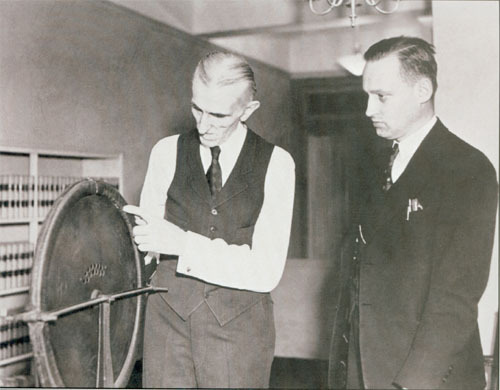
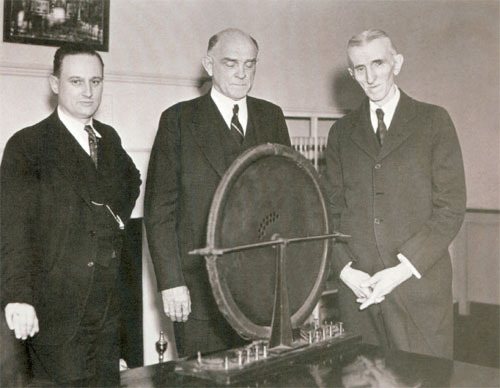
Radio experimenters of this age are following ancient theories, Mr. Tesla believes, and he warns that progress will be more rapid when they discard the old and adopt new ideas. His directions for getting on the right track of radio, television, power transmission by wireless and sundry other branches of science follow:
“The fascination of the electro-magnetic theory of light, advanced by Maxwell and subsequently experimentally investigated by Hertz, was so great that even now, although controverted, the scientific minds are under its sway. This theory supposed the existence of a medium which was solid, yet permitted bodies to pass through it without resistance; tenuous beyond conception, and yet, according to some, one thousand times denser than platinum. According to our conceptions of mechanical principles and ages of experience, such a medium was absolutely impossible. Nevertheless, light was considered essentially a phenomenon bound up in that kind of a medium; namely, one capable of transmitting transverse vibrations lite a solid.”
A Question Tesla Asked.
“It is true,” said Mr. Tesla, “that many scientific minds envisaged the theory of a gaseous ether, but it was rejected again and again because in such a medium longitudinal waves would be propagated with infinite velocity. Lord Kelvin conceived the so-called contractile ether, possessing properties which would result in a finite velocity of longitudinal waves. In 1885, however, an academic dissertation was published by Professor De Volson Wood, an American, at a Hoboken institution, which dealt with a gaseous ether in which the elasticity, density and specific heat were determined with rare academic elegance. But, so far, everything pertaining to the subject was purely theoretical.
“What, then, can light be if it is not a transverse vibration?” That was the question he asked himself and set out to find the answer.
“I consider this extremely important,” said Mr. Tesla. “Light cannot be anything else but a longitudinal disturbance in the ether, involving alternate compressions and rarefactions. In other words, light can be nothing else than a sound wave in the ether.”
“This appears clearly,” Mr. Tesla explained, “if it is first realized that, there being no Maxwellian ether, there can be no transverse oscillation in the medium. The Newtonian theory, he believes, is in error, because it falls entirely in not being able to explain how a small candle can project particles with the same speed as the blazing sun, which has an immensely higher temperature.”
“We have made sure by experiment,” said Mr. Tesla, “that light propagates with the same velocity irrespective of the character of the source. Such constancy of velocity can only be explained by assuming that it is dependent solely on the physical properties of the medium, especially density and elastic force.“
Micro-Wave Possibilities.
Coming now to the wireless waves, it is still true that they are of the same character as light waves, only they are not transversal but longitudinal. As a matter of fact, radio transmitters emit nothing else but sound waves in the ether, and if the experts will realize this they will find it very much easier to explain the curious observations made in the application of these waves.
“It being a fact that radio waves are essentially like sound waves in the air, it is evident that the shorter the waves the more penetrative they would be. In 1899 I produced electromagnetic waves from one to two millimeters long and observed their actions at a distance. There has been a great hope expressed by various workers that introduction of these waves will have a revolutionary effect, but I am not sharing the opinion. They will be used, of course, but to a very limited extent. It is manifest that applications of the very short waves will not produce any appreciable effect upon the wireless art.”
“Errors” Retard Wireless Power.
What about the possibilities of power transmission by wireless? the inquirer said.
Here again Mr. Tesla blames “a strange misconception of the experts” and “grievous errors” for retarding the idea. He believes that when it is accomplished, the power will travel on long waves and not on the wings of “uneconomically produced” short waves. He said he could vouch that the scheme of wireless power transmission is entirely practical.
“The application of short waves for power purposes,” said Mr. Tesla, “involves complicated and expensive apparatus for rectification or frequency transformation, which would make any serious attempt to carry out a project of this kind much more difficult from an economical point of view.“
When will television come around the corner? he was asked.
“It ought to be with us soon, and some day it will be on a par of perfection with broadcasting of music.” Then with a circular sweep of his arm and added, “There will be large pictures thrown on the wall.”
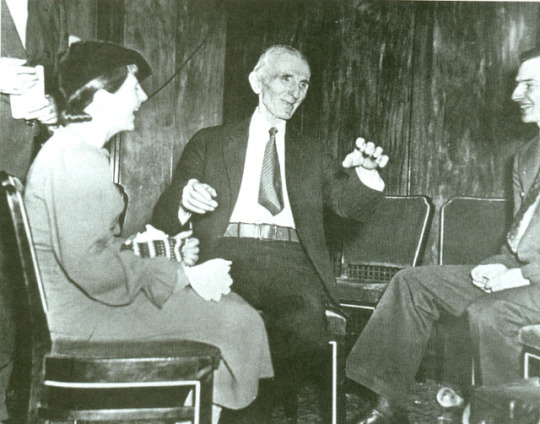
2K notes
·
View notes
Video
vimeo
Java island from above 4K from AntonGanja on Vimeo.
Watch in 4K !!!
This short video was made during a week spent in Java, Indonesia, driving on my motorbike in east and central Java.
Unfortunately on a third day my iPhone was stolen,
so some of a shots (well 2/3 of them) i had to make in a "blind" mode,
hoping that there will be something worth showing...
and...
on day 6 gimbal of my DJI Mavic Pro died.
So the seaside shots were made with uncontrollable (looking down) camera and flying with no visual...
Still glad that could made something from that tho :)
Music: Misha Mishenko - hurricane vindur
facebook.com/roomtonesmusic
Editing: FinalCut Pro X
Check out my instagram for photos: instagram.com/antonganja
Join the adventures: buildthetravel.ru
0 notes
Text
10 Things to Know About Parker Solar Probe
On Aug. 12, 2018, we launched Parker Solar Probe to the Sun, where it will fly closer than any spacecraft before and uncover new secrets about our star. Here’s what you need to know.
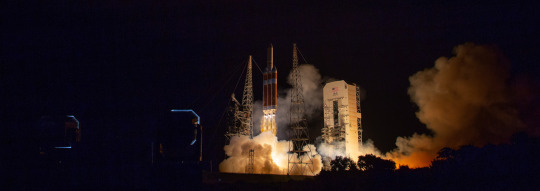
1. Getting to the Sun takes a lot of power
At about 1,400 pounds, Parker Solar Probe is relatively light for a spacecraft, but it launched to space aboard one of the most powerful rockets in the world, the United Launch Alliance Delta IV Heavy. That’s because it takes a lot of energy to go to the Sun — in fact, 55 times more energy than it takes to go to Mars.
Any object launched from Earth starts out traveling at about the same speed and in the same direction as Earth — 67,000 mph sideways. To get close to the Sun, Parker Solar Probe has to shed much of that sideways speed, and a strong launch is good start.
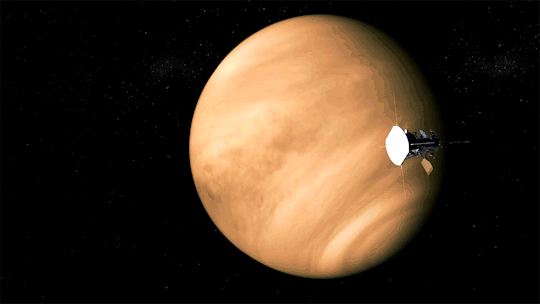
2. First stop: Venus!
Parker Solar Probe is headed for the Sun, but it’s flying by Venus along the way. This isn’t to see the sights — Parker will perform a gravity assist at Venus to help draw its orbit closer to the Sun. Unlike most gravity assists, Parker will actually slow down, giving some orbital energy to Venus, so that it can swing closer to the Sun.
One’s not enough, though. Parker Solar Probe will perform similar maneuvers six more times throughout its seven-year mission!

3. Closer to the Sun than ever before
At its closest approach toward the end of its seven-year prime mission, Parker Solar Probe will swoop within 3.83 million miles of the solar surface. That may sound pretty far, but think of it this way: If you put Earth and the Sun on opposite ends of an American football field, Parker Solar Probe would get within four yards of the Sun’s end zone. The current record-holder was a spacecraft called Helios 2, which came within 27 million miles, or about the 30 yard line. Mercury orbits at about 36 million miles from the Sun.
This will place Parker well within the Sun’s corona, a dynamic part of its atmosphere that scientists think holds the keys to understanding much of the Sun’s activity.
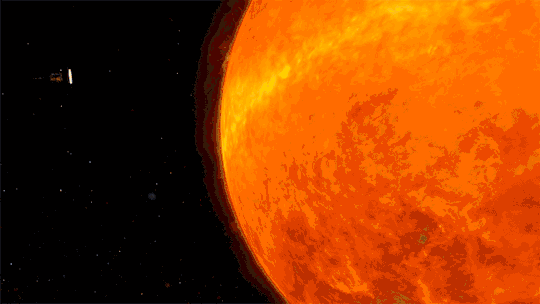
4. Faster than any human-made object
Parker Solar Probe will also break the record for the fastest spacecraft in history. On its final orbits, closest to the Sun, the spacecraft will reach speeds up to 430,000 mph. That’s fast enough to travel from New York to Tokyo in less than a minute!

5. Dr. Eugene Parker, mission namesake
Parker Solar Probe is named for Dr. Eugene Parker, the first person to predict the existence of the solar wind. In 1958, Parker developed a theory showing how the Sun’s hot corona — by then known to be millions of degrees Fahrenheit — is so hot that it overcomes the Sun’s gravity. According to the theory, the material in the corona expands continuously outwards in all directions, forming a solar wind.
This is the first NASA mission to be named for a living person, and Dr. Parker watched the launch with the mission team from Kennedy Space Center in Florida.
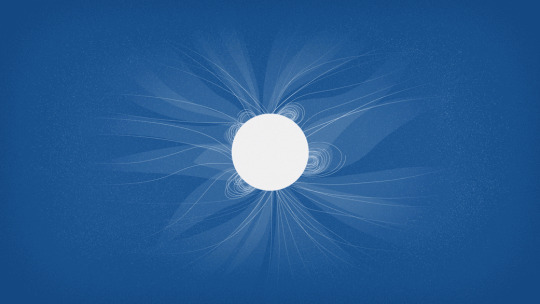
6. Unlocking the secrets of the solar wind
Even though Dr. Parker predicted the existence of the solar wind 60 years ago, there’s a lot about it we still don’t understand. We know now that the solar wind comes in two distinct streams, fast and slow. We’ve identified the source of the fast solar wind, but the slow solar wind is a bigger mystery.
Right now, our only measurements of the solar wind happen near Earth, after it has had tens of millions of miles to blur together, cool down and intermix. Parker’s measurements of the solar wind, just a few million miles from the Sun’s surface, will reveal new details that should help shed light on the processes that send it speeding out into space.
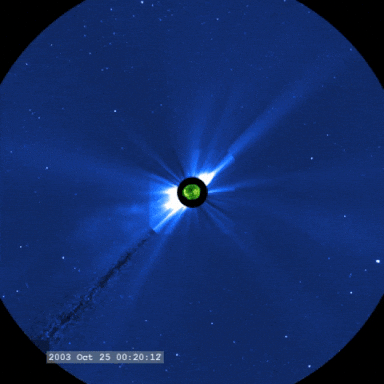
7. Studying near-light speed particles
Another question we hope to answer with Parker Solar Probe is how some particles can accelerate away from the Sun at mind-boggling speeds — more than half the speed of light, or upwards of 90,000 miles per second. These particles move so fast that they can reach Earth in under half an hour, so they can interfere with electronics on board satellites with very little warning.

8. The mystery of the corona’s high heat
The third big question we hope to answer with this mission is something scientists call the coronal heating problem. Temperatures in the Sun’s corona, where Parker Solar Probe will fly, spike upwards of 2 million degrees Fahrenheit, while the Sun’s surface below simmers at a balmy 10,000 F. How the corona gets so much hotter than the surface remains one of the greatest unanswered questions in astrophysics.
Though scientists have been working on this problem for decades with measurements taken from afar, we hope measurements from within the corona itself will help us solve the coronal heating problem once and for all.

9. Why won’t Parker Solar Probe melt?
The corona reaches millions of degrees Fahrenheit, so how can we send a spacecraft there without it melting?
The key lies in the distinction between heat and temperature. Temperature measures how fast particles are moving, while heat is the total amount of energy that they transfer. The corona is incredibly thin, and there are very few particles there to transfer energy — so while the particles are moving fast (high temperature), they don’t actually transfer much energy to the spacecraft (low heat).
It’s like the difference between putting your hand in a hot oven versus putting it in a pot of boiling water (don’t try this at home!). In the air of the oven, your hand doesn’t get nearly as hot as it would in the much denser water of the boiling pot.
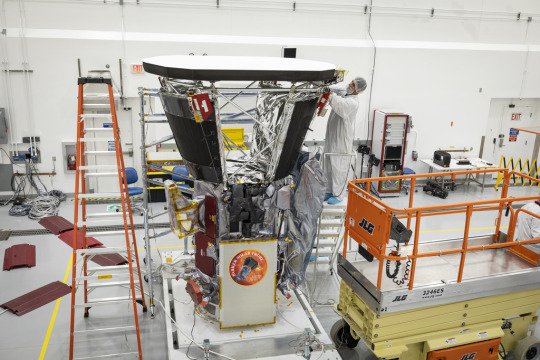
10. Engineered to thrive in an extreme environment
Make no mistake, the environment in the Sun’s atmosphere is extreme — hot, awash in radiation, and very far from home — but Parker Solar Probe is engineered to survive.
The spacecraft is outfitted with a cutting-edge heat shield made of a carbon composite foam sandwiched between two carbon plates. The heat shield is so good at its job that, even though the front side will receive the full brunt of the Sun’s intense light, reaching 2,500 F, the instruments behind it, in its shadow, will remain at a cozy 85 F.
Even though Parker Solar Probe’s solar panels — which provide the spacecraft’s power — are retractable, even the small bit of surface area that peeks out near the Sun is enough to make them prone to overheating. So, to keep its cool, Parker Solar Probe circulates a single gallon of water through the solar arrays. The water absorbs heat as it passes behind the arrays, then radiates that heat out into space as it flows into the spacecraft’s radiator.
For much of its journey, Parker Solar Probe will be too far from home and too close to the Sun for us to command it in real time — but don’t worry, Parker Solar Probe can think on its feet. Along the edges of the heat shield’s shadow are seven sensors. If any of these sensors detect sunlight, they alert the central computer and the spacecraft can correct its position to keep the sensors — and the rest of the instruments — safely protected behind the heat shield.
Read the web version of this week’s “Solar System: 10 Things to Know” article HERE.
Make sure to follow us on Tumblr for your regular dose of space: http://nasa.tumblr.com.
2K notes
·
View notes
Text
The Science Behind the Summer Solstice
Today – Thursday, June 21 – is the summer solstice in the northern hemisphere. But what causes this change in seasons? And what exactly is a solstice? It’s all about Earth’s tilt!
Many people believe that Earth is closer to the Sun in the summer and that is why it is hotter. And, likewise, they think Earth is farthest from the Sun in the winter.
Although this idea makes sense, it is incorrect. There is a different reason for Earth’s seasons.

Earth’s axis is an imaginary pole going right through the center of Earth from “top” to “bottom.” Earth spins around this pole, making one complete turn each day. That is why we have day and night, and why every part of Earth’s surface gets some of each.

Earth has seasons because its axis doesn’t stand up straight. Today, the north pole is tipped toward the Sun, and the south pole is tipped away from the Sun. The northern summer solstice is an instant in time when the north pole of the Earth points more directly toward the Sun than at any other time of the year. It marks the beginning of summer in the northern hemisphere and winter in the southern hemisphere.
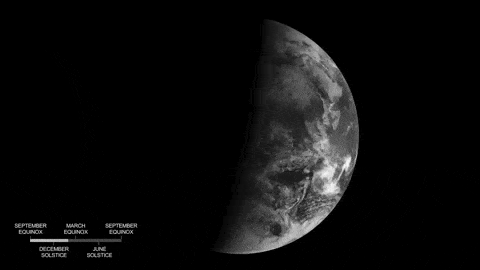
To mark the beginning of summer, here are four ways to enjoy the many wonders of space throughout the season:
1. Spot the International Space Station
As the third brightest object in the sky, the International Space Station is easy to see if you know when to look up. Sign up to get alerts when the station is overhead: https://spotthestation.nasa.gov/. Visible to the naked eye, it looks like a fast-moving plane only much higher and traveling thousands of miles an hour faster!

2. Treat your ears to space-related podcasts
From our “Gravity Assist” podcast that takes you on a journey through the solar system (including the Sun!) to our “NASA in Silicon Valley” podcast that provides an in-depth look at people who push the boundaries of innovation, we have podcast offerings that will suit everyone’s taste. For a full list of our podcasts, visit https://www.nasa.gov/podcasts.
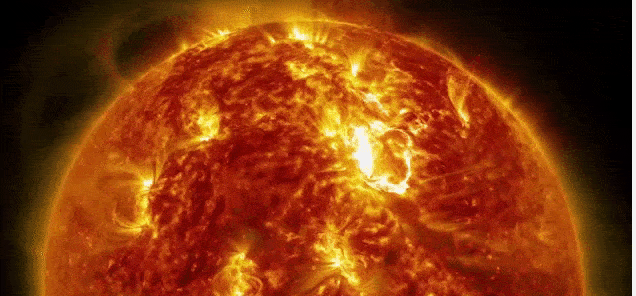
3. Explore space by downloading NASA apps
Our apps for smartphones, tablets and digital media players showcase a huge collection of space-related content, including images, videos on-demand, NASA Television, mission information, feature stories, satellite tracking and much more. For a full list of our apps available for download, visit https://www.nasa.gov/connect/apps.html
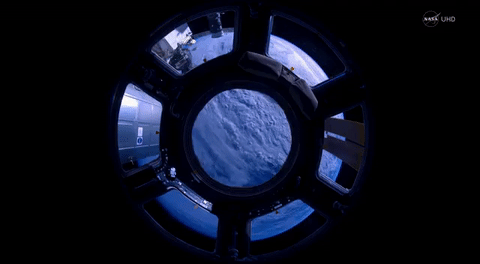
4. Watch launches to space
This summer, we have multiple opportunities for you to take in the sights of spacecraft launches that will deliver supplies and equipment to astronauts living aboard the International Space Station, explore our solar system and much more. Be sure to mark your calendar for upcoming launches and landings!

Make sure to follow us on Tumblr for your regular dose of space: http://nasa.tumblr.com
2K notes
·
View notes
Text
Nikola Tesla Won 8 Nobel Prizes For His Work And Discoveries.
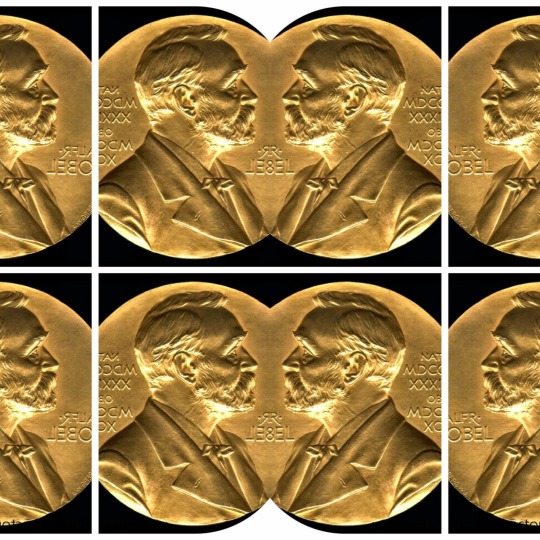
No He Didn’t… These People Did Instead…
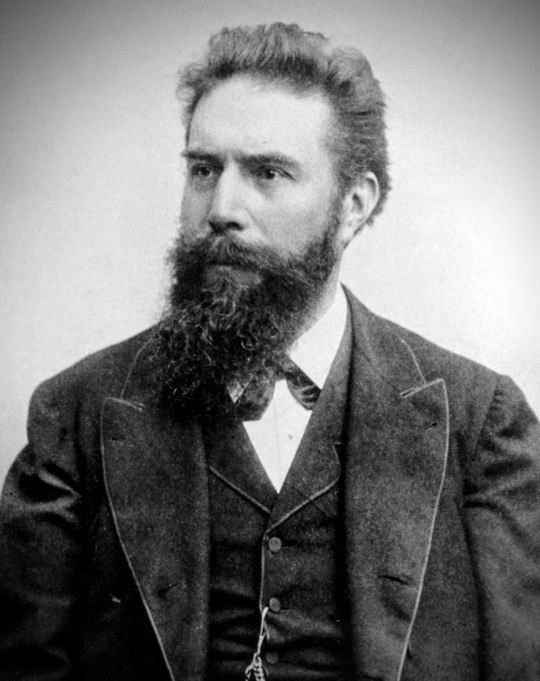
Wilhelm Conrad Röntgen, Physics, 1901: Wilhelm Roentgan was awarded the first Nobel Prize in physics for his discovery of X-Rays on November 8, 1895. Not many know this but Tesla was working with X-Rays prior to Roentgen in 1892, but used the term “radiant matter” instead. He conducted numerous experiments and some of the first imaging, which he called “shadowgraphs,” using these unknown rays in his laboratory before its destruction by fire on March 13, 1895. Tesla was also the first to warn the scientific world on the harms of these rays if not used properly.
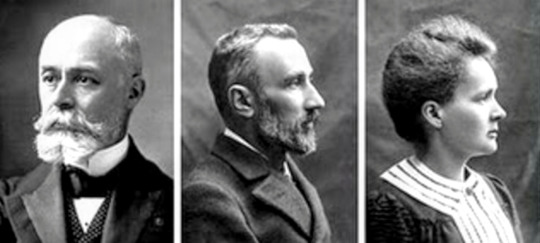
Marie Curie, Pierre Curie and Antoine Henri Becquerel, Physics/Chemistry, 1903/1911: The three shared the 1903 Nobel Prize in Physics for their discovery and work on radioactivity in 1898. Madame Curie won the 1911 Nobel Prize in Chemistry for her discovery of radium and polonium, also in 1898. Tesla discovered radioactivity in experiments with X-Rays in 1896, and published many articles on the subject in scientific periodicals prior to the three.
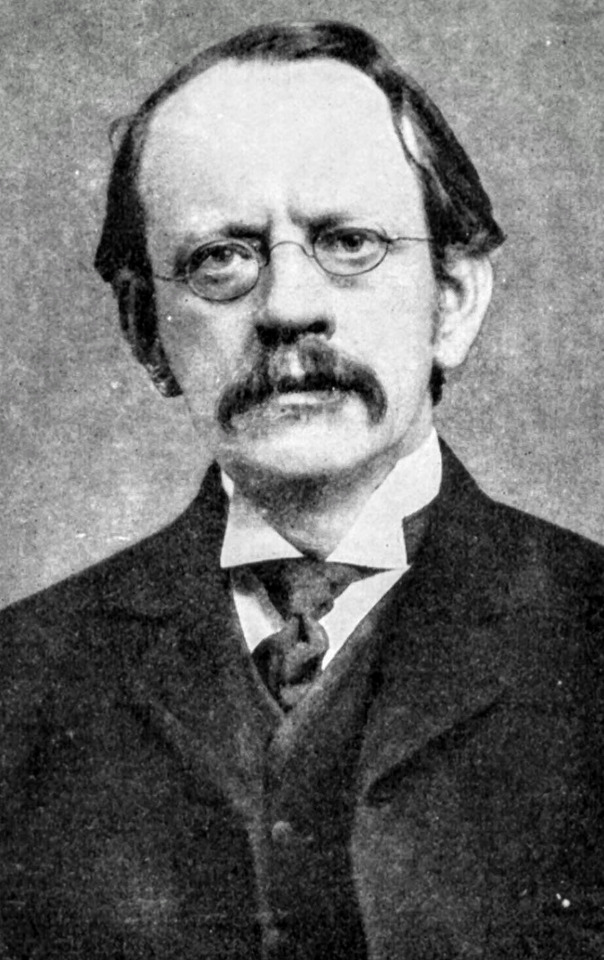
Joseph John Thomson, Physics, 1906: Thomson was awarded the Nobel Prize for his discovery of the electron in 1897. Tesla originally called electrons “matter not further decomposable” in his experiments with radiant energy in 1896, but his discovery of the electron goes back as far as 1891 in a debate he and Thomson had about Tesla’s experiments with alternating currents of high frequency. Tesla claimed that his experiments proved the existence of charged particles, or “small charged balls.” Thomson denied Tesla’s claim of verifying these particles until witnessing Tesla’s experiments and demonstrations given in a lecture before the Institute of Electrical Engineers at London in 1892. Thomson then adapted to Tesla’s methods of high frequency and was able to use equipment which allowed him to produce the required frequencies to investigate and establish his electron discovery.
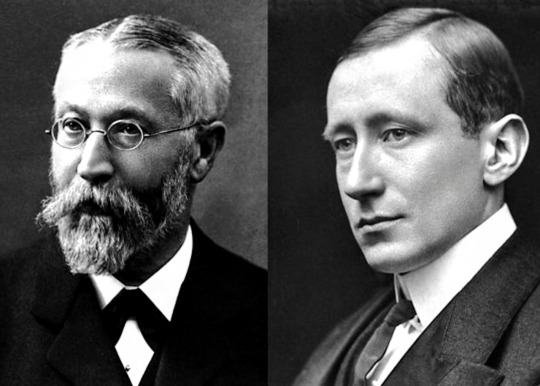
Guglielmo Marconi and Karl Ferdinand Braun, Physics, 1909: Both shared the Nobel Prize for their work and development of radio. Marconi is known for proving radio transmission by sending a radio signal in Italy in 1895, but it is a fact that he used Tesla’s work to establish his discovery. Tesla invented the “Tesla Coil” in 1891, which Marconi’s inventions relied on, and the inventor proved radio transmission in lectures given throughout 1893, sending electromagnetic waves to light wireless lamps. Tesla filed his own basic radio patent applications in 1897, which were granted in 1900. Marconi’s first patent application in the U.S. was filed on November 10, 1900, but was turned down. Marconi’s revised applications over the next three years were repeatedly rejected because of the priority of Tesla and other inventors, but was finally able to bypass Tesla’s work and secure his own. After Tesla’s death in 1943, the U.S. Supreme Court made Marconi’s patents invalid again and recognized Tesla as the true inventor of radio.
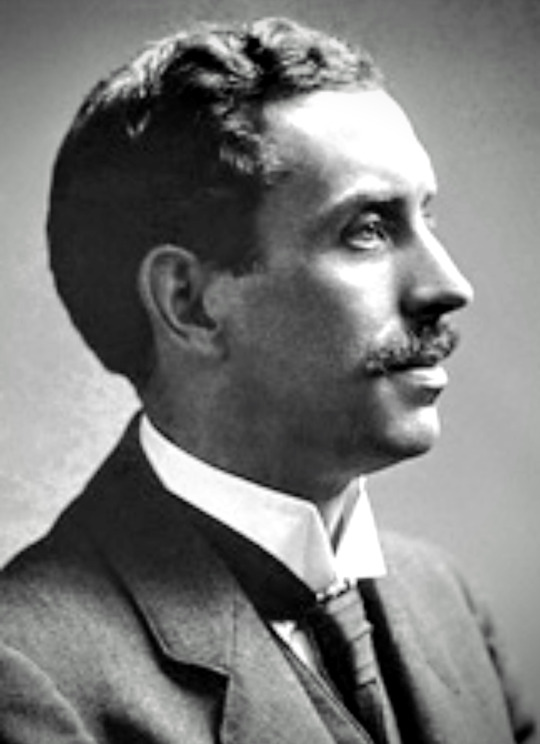
Charles Glover Barkla, Physics, 1917: Barkla was awarded the prize for his work with Rontgen radiation and the characteristics of these X-rays and their secondary elements and effects. He was educated by J. J. Thomson. Again, Tesla worked with and explained these radiations in full detail throughout the late 1890s, showing that the source of X-rays was the site of first impact of electrons within the bulbs. He even investigated reflected X-rays and their characteristics such as Barkla.
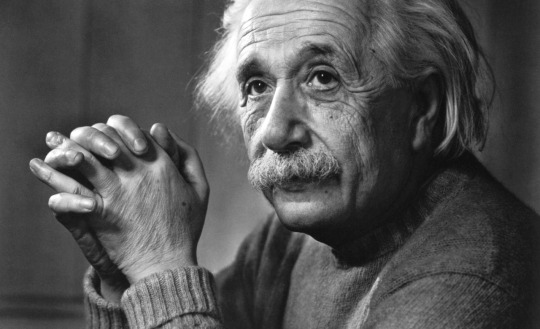
Albert Einstein, Physics, 1921: Einstein was awarded the prize for his theoretical theories which are still praised today, and also his discovery of the law of the photoelectric effect. In 1905, Einstein considered that light has a nature of both a wave and a particle. This lead to the development of “photons,” or photo electrons, which gave light a wave-particle duality. Now it must be noted that Nikola Tesla wasn’t just a theoretical physicist like Einstein, but was an experimental physicist as well. In 1896, Nikola Tesla was the first to propose that energy had both particle-like and wavelike properties in experiments with radiant energy. He set up targets to shoot his cathode rays at which upon reflection, projected particles, or vibrations of extremely high frequencies. Nikola Tesla preceded Einstein by 4 years on the photoelectric effect publishing a patent titled “Apparatus of the Utilization of Radiant Energy.” filed in 1901, based off his experiments with radiant energy. He had a far better understanding on the matter than Einstein, mostly because he actually experimented with the issue to prove his theories.
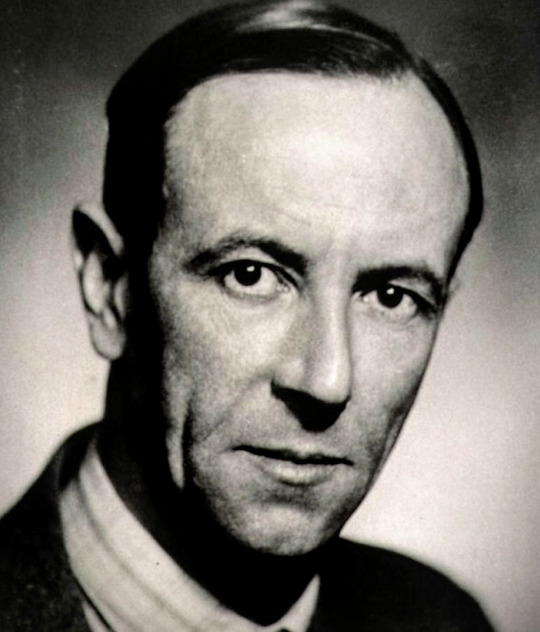
James Chadwick, Physics, 1935: Awarded the prize for his discovery of the neutron in 1932. Tesla’s discovery of neutrons goes back to his work with cosmic rays, again in 1896, which are mentioned in the next bit. He investigated and discovered that cosmic rays shower down on us 24/7, and that they are small particles which carry so small a charge that we are justified in calling them neutrons. He measured some neutrons from distance stars, like Antares, which traveled at velocities exceeding that of light. Tesla succeeded in developing a motive device that operated off these cosmic rays.

Victor Franz Hess, Physics, 1936: Hess won the Prize for his discovery of the cosmic rays in 1919. Tesla predated him 23 years publishing a treatise in an electrical review on cosmic rays in 1896. Tesla’s knowledge on the matter surpasses even today’s understanding of cosmic rays.
1K notes
·
View notes
Video
vimeo
Lattice from Maria Constanza Ferreira on Vimeo.
Iridescent waves, geometrical gardens, and spiraling sand dunes found in the landscapes of a crystal's microscopic structure.
Festivals:
Imagine Science Film Festival - New York
Splice Audiovisual Festival - London
Made possible at the RISD Nature Lab:
naturelab.risd.edu/discover/student-work-maria-ferreiras-crystal-imaging/
mariacf.com/Lattice
Music:
Collaged sounds from a i r s p a c e - LP1 & LP2
0 notes
Video
8K Ultra HD Cinematography by Chris Dortch from Chris Dortch on Vimeo.
8K Ultra HD cinematography from around the world that showcases epic scenes in many popular sites as well as locations that are rarely seen. Checkout GlobalArchive.com, contact [email protected], and connect to linkedin.com/in/chrisdortch
Duration: 22:00 | Resolution: 4K Ultra HD 2160P (3840x2160) | FPS: 29.97
Filename: 4K2160P29.97_BestOf4K_22.00.mov
youtube.com/watch?v=SuUlHD4sBB4
0 notes
Video
vimeo
Magical Europe - Timelapse from StanChang on Vimeo.
Magical Europe Volume Two: vimeo.com/219367805
One family, 2 cameras, 30 countries, 60 flights, 1000+ time lapse videos, 200,000+ images - almost 20 terabytes of data!
Hello everyone, I’m from Taiwan.
This is a compilation of time lapse videos shot over the last two years when I travelled Europe with my wife and son. I'm excited to share some of my favorite clips.
I think that everybody needs to take a trip and have their eyes opened to just how beautiful the world is.
Please watch full screen in HD with sound if your device allows it.
I hope you enjoy it. Please leave a comment if you wish; I'd love to hear from you.
Equipment used: Nikon D800E, Nikon D600
Professional Total Camera Moving Solution: Konova (konovaphoto.com)
LRTimelapse (lrtimelapse.com)
Music with permission : ' The Death of a Star ' by Van Syla (facebook.com/VanSylaMusic)
jamendo.com/en/track/633590/the-death-of-a-star
FB:facebook.com/StanChangPhoto
If you would like to license any of these clips or images, please contact me at [email protected].
Available in 4K resolution. Some clips available in resolutions from 5K to 8K.
Thanks so much for checking it out. Please feel free to share.
================================================================================
The locations are list below:
00:01 Blue Grotto, Malta 馬爾他 藍洞
00:09 Kerio, Iceland 冰島 凱瑞斯火山口湖
00:15 Kinderdijk, Nederland 荷蘭 小孩堤防
00:19 Lake Bled, Slovenia 斯洛維尼亞 布萊德湖
00:22 Dublin, Ireland, 愛爾蘭 都柏林
00:24 Keukenhof, Nederland 荷蘭 庫肯霍夫花園
00:26 Neum, Bosnia 波士尼亞 尼姆
00:27 Jungfraujoch, Switzerland 瑞士 少女峰
00:29 Fira, Santorini, Greece 希臘聖托里尼 費拉
00:33 Azure window, Malta 馬爾他 藍窗
00:37 Fira, Santorini, Greece 希臘聖托里尼 費拉
00:40 Oia, Santorini, Greece希臘聖托里尼 伊亞
00:43 Salt pans, Malta 馬爾他 鹽田
00:45 Vaduz, Liechtenstein 列支敦士登 瓦都茲
00:47 Plivicka Jezera, Croatia, 克羅埃西亞 十六湖國家公園
00:50 Dubrovnik, Croatia克羅埃西亞 杜布尼克
00:53 West Iceland 冰島西部
00:56 Plivicka Jezera, Croatia, 克羅埃西亞 十六湖國家公園
00:58 Flam, Norway 挪威 佛拉姆
01:00 South Iceland 冰島南部
01:03 Jokulsarlon, Iceland 冰島冰河湖
01:07 Zarmatt, Switzerland 瑞士 策馬特
01:10 Oia, Santorini, Greece 希臘 聖托里尼 伊亞
01:14 North Iceland 冰島北部
01:17 South Iceland 冰島南部
01:20 Jokulsarlon, Iceland 冰島 冰河湖
01:22 South Iceland 冰島南部
01:24 North Iceland 冰島北部
01:26 Birtavarre, Norway 挪威
01:28 Jokulsarlon, Iceland 冰島 冰河湖
01:31 Renie, Lofoten, Norway 挪威 羅浮敦群島
01:34 Skogarfoss, Iceland 冰島 史科佳瀑布
01:36 Gullfoss, Iceland 冰島 古佛斯瀑布
01:38 Bergen, Norway 挪威 卑爾根
01:40 Matterhorn, Switzerland 瑞 士馬特洪峰
01:42 Dolomit, Italy 義大利 多洛米蒂山
01:44 Dubrovnik, Croatia 克羅埃西亞 杜布尼克
01:48 Helsinki, Finland 芬蘭 赫爾辛基
01:50 Copenhagen, Danmark 丹麥 哥本哈根
01:52 Tallinn, Estonia 愛沙尼亞 塔林
01:55 Copenhagen, Danmark 丹麥 哥本哈根
01:56 Luzern, Switzerland 瑞士 琉森
01:29 Cologne, Germany 德國 科隆
02:02 Lisbon, Portugal 葡萄牙 里斯本
02:05 Berlin, Germany 德國 柏林
02:09 London, UK 英國 倫敦
02:12 Cologne, Germany 德國 科隆
02:16 Athens, Greece 希臘 雅典
02:19 Budapest, Hungary 匈牙利 布達佩斯
02:23 Lisbon, Portugal 葡萄牙 里斯本
02:26 Fira, Santorini, Greece 希臘聖托里尼 費拉
02:30 Salzburg, Austria 奧地利 薩爾斯堡
02:33 Bratislava, Slovensk 斯洛伐克 布拉提斯拉瓦
02:36 Prague, Czech 捷克 布拉格
02:38 London, UK 英國 倫敦
02:40 Dublin, Ireland, 愛爾蘭 都柏林
02:41 Barcelona, Spain 西班牙 巴塞隆納
02:43 Amsterdam, Nederland 荷蘭 阿姆斯特丹
02:47 Paris, France 法國 巴黎
02:48 Paris, France 法國 巴黎
02:50 Barcelona, Spain 西班牙 巴塞隆納
02:54 Paris, France 法國 巴黎
02:57 Procida, Italy 義大利 普羅奇達
03:00 Florance, Italy 義大利 佛羅倫斯
03:03 Sanmarino 聖馬力諾
03:07 Prague, Czech 捷克布拉格
03:10 Sveti Stefan, Montenegro 黑山共和國 公主島
03:13 Hamnoya, Lofoten, Norway 挪威 羅浮敦群島
03:15 Riomaggiore, Italy 義大利 五漁村
03:18 Roma, Italy 義大利 羅馬
03:21 Stockholm, Sweden 瑞典 斯德哥爾摩
03:24 Falkirk, Scotland, UK 英國蘇格蘭
03:27 Bergen, Norway 挪威 卑爾根
03:29 Manorola, Italy義大利 五漁村
03:31 Vatican 梵諦岡
03:33 Roma, Italy 義大利 羅馬
03:35 Glasgow, Scotland, UK 英國 格拉斯哥
03:38 St Petersburg, Russia 俄羅斯 聖彼得堡
03:41 Brussels, Belgium 比利時 布魯塞爾
03:43 Venice, Italy 義大利 威尼斯
03:45 IceHotel, Kiruna, Sweden 瑞典 冰酒店
03:46 Zadar, Croatia 克羅埃西亞 扎達爾
03:48 Northwest Iceland 冰島西北部
03:51 North Iceland 冰島北部
0 notes
Video
vimeo
Vermilion from Andrew Walker on Vimeo.
Recently got a drone and I've always wanted to see White Pocket from the air. The patterns in the sandstone seem to be even more interconnected with each other the higher up you go. Its a magical place.
Music: "The Leftovers: Season 3" Soundtrack
Artist: Max Richter
Track: "And know the place for the first time"
itunes.apple.com/us/album/and-know-the-place-for-the-first-time/1243713389?i=1243713677
0 notes
Video
vimeo
GALAXIES Vol. II: wonders of the winter night skies - 4K from Adrien Mauduit Films on Vimeo.
As the days shorten and the darkness progressively eats away the light, an amazing transformation happens in the northern hemisphere skies. A lot of astronomers and stargazers prefer summertime to look up at the stars, probably because conditions are better and the brightest part of our own galaxy, the milky way is more visible, even with the naked eye. Although fainter, the ‘winter’ part of the milky way and the rest of the winter sky harbor countless unsuspected gems, if one knows how to find and capture them!
In the late Fall, you can still get a glimpse at the bright core of our galaxy sink down under the horizon just after sunset, along with its dark hydrogen gas lanes, Lagoon and trifid nebulae, and Saturn. Later, you can catch Scutum (shield constellation) and its dark nebulosity set in the south west/west. In the movie, this part is visible in many scenes but my favorite one is by far as it sets on La Palma shores behind a thunderstorm accompanied by red sprites, airglow and zodiacal lights.Then, take a peek at one of my favorite areas of the winter sky: the Swan constellation. I presented it to you (also on the cover), so that you can see it from different perspectives, but the best is probably at a narrower angle to show the beautiful magenta colors of the H-alpha emission nebulae (North-American, Pelican, Sadr region or IC 1396). I also included a scene where the ‘Summer Triangle’ of Cygnus (formed by Deneb, Sadr, Delta Cygni, and Gienah) is photobombed by an overhead aurora borealis. Continuing along the winter milky way, I included a shot of the Heart and Soul nebula. Rising on the other side of the hemisphere, we are now looking at the outer edge of our galaxy, where very little light comes from fewer stars, nebulae and dark clouds (in comparison to the core!). I wanted to show you a very novel scene combining the hot Pleiades stars reflecting their blue light onto passing gasses and the California nebula glowing blood red! The next area I want to emphasize is winter’s most emblematic: Orion. I wanted to maximize the different colors and brightness this constellation has to offer while shooting it in a series of single shots: the orange of Betelgeuse and the blue of Rigel, the gigantic red-glowing Barnard’s loop, the inevitable shell-like Orion nebula along with the running man nebula, the horse-head nebula, the flame nebula, Lambda Orionis nebula… Further away from the winter milky way doesn’t mean dull at all, au contraire! Look at the magnificent Andromeda galaxy (M31), the size of 6 full moons- rise above the tree line! What about the iconic Big Dipper being photobombed by some pillars of Icelandic and Canadian aurora borealis? What about these iridescent marbles at the very start of the video? Those are twinkling Sirius, Capella (bottom left) and Vega (upper right) emphasized by the real-time out-of-focus setting to reveal the hypnotic shift in light and colors of these twinkling stars created by our own atmosphere! You will probably miss a lot of night sky events if you only watch the video once! Don’t blink, you might miss a lot of meteors (Perseids, Orionids, Draconids, Leonids…), iridium flares, low-orbit satellites, red sprites. What about those satellites that seem to ‘follow’ each other in some deep-sky scenes? Those are geosynchronous satellites normally hovering over a fixed point of the Earth, but the motion of the star tracker allows them to move whereas the sky is now immobile. I am sure professionals and amateurs will spot many more features, all you have to do is sit back and gaze!
The goal of this series of astro-lapses ‘Galaxies’ and especially this second opus was a way for me to push the limits of single astrophotography. However beautiful and numerous they are, wide-angle shots of the milky way moving against a foreground became less interesting to me as I got to shoot more and more astro-timelapses. I became more interested in exploring the possibilities that modern lenses, sensors and techniques could give, so I started using medium-format and astromodfication to take advantage of a wider light spectrum and show the red colors of H-alpha emission nebulae that are so ubiquitous in the winter part of the sky. I also wanted to improve the quality of the shots, so I used a square light pollution filter for shots at more than 50mm (Lonely Speck’s Pure Night LP filter), and a star tracker for some of the scenes to increase sharpness and details (Vixen Polarie). It was very important for me to prove that deep-sky time-lapses can be very interesting and successful, whether they hold a foreground or not, because so many things can be happening the sky (airglow, meteors, satellites, haze giving a temporary glow to the stars…). All shots have been recorded over the past year and in different countries (France, Switzerland, Spain, Iceland, Denmark and Canada). I will gladly give more details upon request. Thanks a lot for watching!
0 notes
Video
vimeo
Magical Norway - an aerial journey from Casper Rolsted on Vimeo.
Experience the hidden beauty of Norway on this aerial journey through the nature. This is the third of a series of films that describes the nature of Scandinavia through timelapses and aerial photography.
Film locations in “Magical Norway”:
- Havøya, Lillefjord, Garpholmen (Måsøy Municipality in Finnmark county)
- Svartisen glacier
- Dalsnibba Mountain Plateau
- Oltedalsvatnet (Gjesdal municipality in Rogaland county)
Photographer and editor: Casper Rolsted
Music: “Deliverance” by Jo Blankenburg
Camera equiptment: DJI Phantom 4
The material for this project was shot during a 7000 km long road trip through amazing scenery in the summer 2016. This adventure went from Copenhagen in the south of Scandinavia through the always changing landscapes of Norway with its deep fjords, snowy mountains, glaciers and many waterfalls, through the untouched islands of Lofoten and all the way to the moon landscape at the North Cape before returning to Denmark through Finland and Sweden with thousands of lakes and deep mysterious forests. On this epic journey not only the most popular tourist places were visited. To get the right shots it was often necessary to hike for hours with heavy equipment to remote locations.
During my hiking in the nature I shot 35 thousands time-lapse photos and several hundred aerial photography videos in 4K of some of Scandinavia's most beautiful spots. Afterwards this footage was combined to make a series of 4K video films that show the beautiful landscapes of the Nordic countries.
Nature's beauty can be so easily missed. It is my hope that these films will contribute to a deeper understanding and gratitude of the natural wonders in our world and to the preservation of our fragile environment in the future.
FOLLOW MY WORK
YouTube.com/CasperRolsted?sub_confirmation=1
Facebook.com/CasperRolstedVisuals
Instagram.com/CasperRolsted
Twitter.com/CasperRolsted
0 notes
Video
vimeo
DEATH VALLEY 8K from More Than Just Parks on Vimeo.
In the remote far reaches of the Mojave Desert lies the largest national park in the continental United States. Hidden here in the hottest place on earth is another world full of diverse life and colorful landscapes. Join us as we take life to the extreme and explore Death Valley. Filmed primarily in 8K.
To see more National Park films or learn more about More Than Just Parks, visit our website: morethanjustparks.com/
Licensing: morethanjustparks.com/licensing
Prints: morethanjustparks.smugmug.com/MoreThanJustParks/
Email: [email protected]
Social: FB facebook.com/morethanjustparks, Twitter: twitter.com/MTJParks, Insta: instagram.com/morethanjustparks
Sony a7R II
Canon 5D Mark III
Blackmagic URSA Mini 4.6K
Timelapse Gear:
Pulse & Radian by Alpine Labs
alpinelaboratories.com/voyageurs
Music: Jordan Critz "Edge of the Light"
100% of your donations go toward making more captivating short films like the ones we've already made.
0 notes
Video
vimeo
AWESOMES from Alex Soloviev on Vimeo.
Deep ocean is a like an another space world. Eternal world that we have to protect to survive.
No special VFX used, only lens effects.
Follow me at fb.com/alexaafilm and fb.com/alexaasolo
Music by Cabeiri and AstroPilot (with permission) - fb.com/astropilot & soundcloud.com/astropilot
0 notes
Video
vimeo
Canada: Coast to Coast | 8K from Dominic on Vimeo.
Like many people, I dreamt about splendors far away from home. I was drawn to adventures in foreign places where everything would be unknown and exciting. I was overlooking my own country and what treasures it had to offer…
“A wise traveler never despises his own country”. — William Hazlitt
To create Canada: Coast to Coast, I embarked on a four months journey over the span of two years.
I saw massive mountain ranges and spectacular waterfalls, turquoise lakes and rivers fed by glaciers, small fishing villages and pulsating cities, as well as dramatic skies over World Heritage Sites and untouched coastlines.
I invite you along to discover the immensity and diversity of my homeland, the world’s second-largest country.
Welcome to a land of contrast and calm grandeur.
/ Stats
Number of km traveled: ~ 23,000 km
Number of hours spent on the road: ~ 270 hours
Number of pictures in the video: 3,600
/ Music
'Where We Are' by Mark Petrie / Brent McCorkle
/ Technical Info
Please note that 8K playback on Vimeo is only available in Safari 11+ for Mac OS High Sierra or the latest version of Edge for Windows 10 (with supported hardware).
Camera: Nikon D810
Lenses: Nikkor 17-35, 28-70, 80-200
/ Licensing
For licensing information please visit: dominicboudreault.com/licensing
/ Connect with Me
Website: dominicboudreault.com
Instagram: instagram.com/dominicboudreault
Twitter: twitter.com/domboudreault
0 notes
